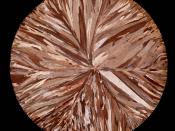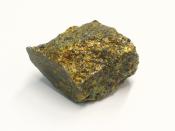Environmental effects of copper
Copper can be released into the environment by both natural sources and human actions. Examples of natural sources are wind-blown dust, decaying vegetation, forest fires and sea spray. Other examples are mining, metal production, wood production and phosphate fertilizer production.
Because copper is released both naturally and through human activity it is very widespread in the environment. Copper is often found near mines, industrial settings, landfills and waste disposals.
When copper ends up in soil it strongly attaches to organic matter and minerals. As a result it does not travel very far after release and it hardly ever enters groundwater. In surface water copper can travel great distances, either suspended on sludge particles or as free ions.
Copper does not break down in the environment and because of that it can gather in plants and animals when it is found in soils. On copper rich soils only a number of plants has a chance of survival.
That is why there is not much plant diversity near copper disposing factories. Due to the effects upon plants copper is a serious threat to the productions of farmlands. Copper can also influence the proceedings of certain farmlands, depending upon the acidity of the soil and the presence of organic matter. Despite of this, copper-containing manures are still applied.
Copper can interrupt the activity in soils, and influences the activity plants and animals
When the soils of farmland are polluted with copper, animals will absorb concentrations that are damaging to their health. Mainly sheep suffer a great deal from copper poisoning.
Resource Processing
There are Four methods used to process copper, these methods are:
Milling
Smelting
Electrolytic refining
Final processing
Milling acts as a crusher, where the ore is broken into small pieces. Water is first added to the crushed...


